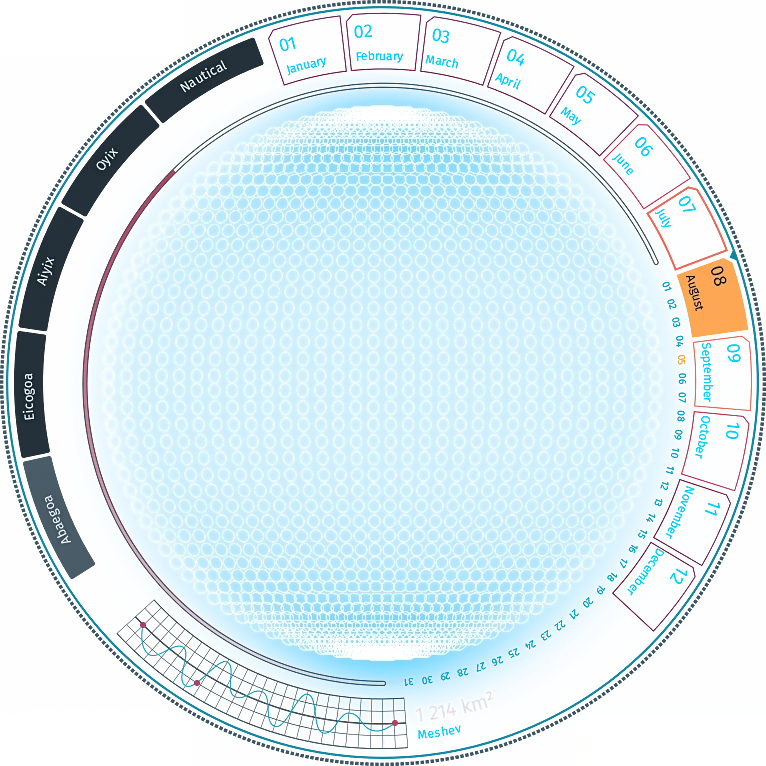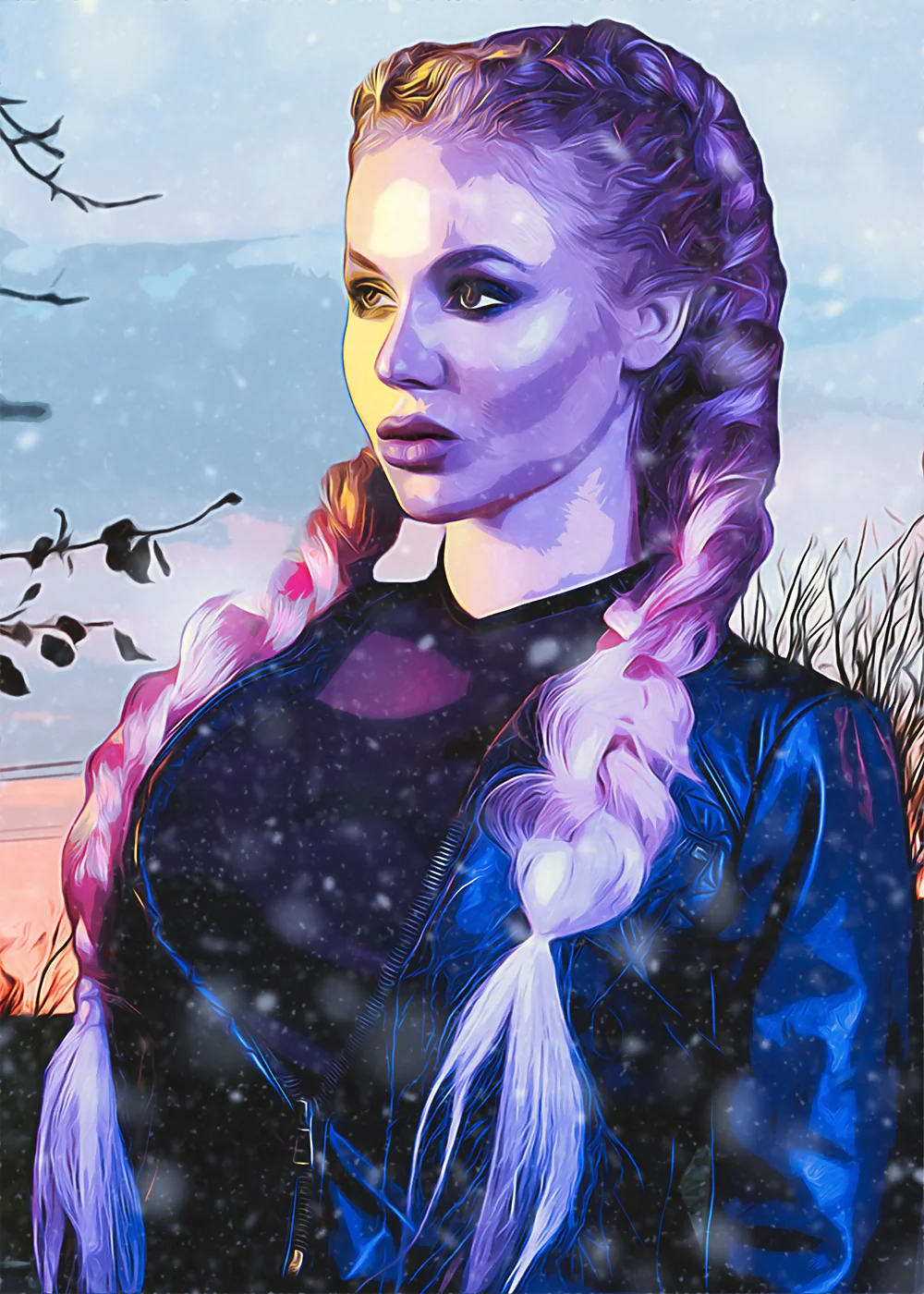Helvik (ˈhɛl.vɪk)
The Helvik are native to Kjersia's snowcapped highlands and taiga. Their minds and bodies have been tempered by the cold, resulting in a sturdy and stocky people. Wolves are familiar to them they avoid killing them, treating them as companions. The Helvik are resistant to severe winds and snowstorms and can take advantage of these conditions to survive. They are often excellent marksmen, taking advantage of the wind to achieve near-impossible hits.
Although the Helvik culture is steeped in tradition, due to current technology breakthroughs and cultural transformations, many old traditions are being questioned by younger generations.
Culture
Culture and cultural heritage
Helviks place a strong emphasis on community and togetherness, teaching their children that survival requires teamwork and social connection. They teach them to endure suffering because there is always something good waiting for them when they overcome it. Survival in the taiga requires efficiency in both word and deed. All Helvik have the strength and tenacity to persevere in the face of adversity, even with modern technology.
Shared customary codes and values
Cleanliness has religious importance in addition to being a show of affluence and status. Being dirty is associated with inexperience and 'lower' states of existence, implying an incapacity to transcend. Personal hygiene is important.
When out on the ice, the Helvik learn the different sounds of breaking ice at a young age because one misstep can send them to a freezing death.
A capable mother and housewife has always been genuinely cherished and appreciated by her family and society, and her work is genuinely recognized and valued as well.
Common Etiquette rules
Purpose and order, decent manners, and proper conduct are all important to the Helvik. Their culture focuses on perseverance and determination, necessitates self-discipline to achieve goals, and grace in dealing with actions and emotions.
Common Dress code
The Helvik dress in a variety of thick and weatherproof layers, including boots, mittens, and thick parkas and coats. Throughout the year, the same type of clothing is worn, and men and women dress similarly. They favor simple attire and are most proud of their boots, which are usually particularly well-made. Earrings were not traditionally worn by men or women because they were thought to detract attention from their hair, but recently, many women have begun to do so.
Art & Architecture
The practicality of Helvikish art is one of its key aspects, and the majority of Helvikish art is carved in wood. In their culture, woodworking is an important profession and skill. Metals, stones, ivory, bone, and textiles are among the other materials used. The use of symbolism is another key feature of Helvikish art. Extensive abstracted designs of animals, birds, humanoid figures, and patterns can be seen. The intertwining of shapes or radial motifs, known as Helvikish knotwork, is a popular design.
Common Customs, traditions and rituals
At the heart of Helvikish culture is their hair. The numerous braids a person wears can reflect the type of life they lead, with their hair functioning as a physical representation of their thoughts and very being. As a result, hair is a sacred and spiritual aspect of the body that should never be touched by strangers. Hair length is directly linked to honor, whereas having one's hair cut by someone else meant capitulation, defeat, and shame. Many younger generations now wear their hair unbraided because of cultural shifts, although hair is still revered. Their display is said to demonstrate that nothing is set in stone, and that they create their own narrative.
Funerary and Memorial customs
For the Helvik, open-air cremation is customary. Because burying the dead was once difficult due to the frozen ground, the heat from the open crematorium was thought to represent the deceased giving back to the community. This is still practiced today. A lock of hair is ceremoniously cut from the deceased, woven with beads, and braided into a plait of past generations' locks prior to the ritualistic funeral pyre. Because the departed have already passed on and can no longer be shamed in the physical realm, the cutting of this lock is not seen as a form of disgrace. Only locks from those who were shunned are left out of the ancestral braids, which are a type of genealogical record. This is akin to striking their name from family trees.
Common Taboos
Hair is inextricably linked to a sense of self-respect and is as highly valued as the body itself for the Helvik, hence hair cutting is the highest form of shame. Lying, procrastination, and hypocrisy are also condemned in their culture, which promotes efficiency in both word and deed. Because wolves are highly valued in Helvikish society and are considered honored companions, killing one is considered the same as killing a person, and is so avoided, except when doing so would be considered a mercy.
While it is not forbidden to be unfaithful, it is nonetheless frowned upon because it is considered a poor display of manners. The only liaison that is forbidden is a man lying with another man's wife. He could be fined, imprisoned, or have his hair cut as a result, usually all three.
Ideals
Beauty Ideals
A woman's curvy shape was once regarded to be an indication of her or her partner's ability to provide for their family, and the length and luster of her hair a sign of her spirituality or virtue. As a result of modern technology's ability to make these readily available to anyone, they have become relatively irrelevant. Men, on the other hand, are still proud of their hair, feeling it still indicates their ability to provide and protect. Natural hair is still highly respected, and only a small percentage of Helvik have it modified. The men are especially proud of the quality of their boots, which are still largely handcrafted.
Gender Ideals
There are no male religious or magical leaders because it was once thought that only women could devote the time and effort required to focus on developing the talents and fortitude required to gain status. Women interpreted the gods' messages for the people, and women still dominate the arcane and religious sectors today. Women have overseen raising children and managing the home since ancient times, although both men and women cook for the household. Gender roles have shifted in many modern households, and a large percentage of Helvik women accept jobs apart from domestic ones. Traditional homes can be found just as easily as contemporary ones, however.
Divorce has always been simple and commonplace and can be initiated by either the man or the woman. If a woman files for divorce because of her husband's misbehavior, she is entitled to substantial monetary compensation from him to guarantee that she can support herself once she is alone again.
Women were once rare in the military; it was believed that a woman's full-time responsibilities of running a household and raising children made it difficult for her to join. This was more of a social norm than a rule. Older women with grown children were typically too old to enlist, but they commonly volunteered or worked in essential roles such as scientists, developers, and teachers. Many women enlist in the military today, usually joining a new unit of magic users. Sniper units have grown in size as more women take advantage of their hardy upbringing and utilize their skills in previously unimaginable ways.
Courtship Ideals
Although courtship is not obligatory for the Helvik, there are a few traditions that they once followed. A woman usually made a pair of boots for a man to demonstrate interest in him. For women, males frequently carved combs or crafted brushes by hand. This is still common today, but many young people, particularly women, make stronger displays of affection.
If it is discreet, sex before marriage is acceptable, but having a child out of wedlock is not. Having a child outside of marriage is deemed inappropriate because life in the taiga is harsh and raising a child in it is difficult. It is commonly thought that proper parenthood with only one parent is impossible. This restriction is imposed because of the burden and likelihood of failure, not because it is considered wrong or shameful. Few men are ready to take on the burden and expense of another man's child, hence stepparents are uncommon among the Helvik.
Relationship Ideals
It is customary for husbands to keep their wives at their side when dealing with important matters, going on an outing, or attending a public event as a display of affection and to indicate that they see their spouses as equals. Many women choose to spend their time working or doing other things, even though this is still relevant. Arguing in public has always been frowned upon because it reflects domestic disarray and bad manners.
In Helvik society, remaining unmarried was once frowned upon; their traditional beliefs emphasized community and togetherness, therefore remaining single was a rebuke. Because they were not fulfilling their ultimate duty, which was believed to be producing children for the survival of their families and society, such people risked becoming social outcasts. Today, however, many women refuse to get married, arguing that they are self-sufficient and do not need to rely on a man. In Helvik history books, their protests, combined with balancing autonomy and demonstrating that they still value community, became known as 'The Great Shift.'



Comments